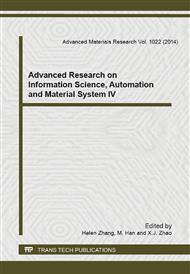p.368
p.372
p.376
p.380
p.387
p.392
p.396
p.402
p.406
The Study of Deformation Monitoring Based on the Ground Three-Dimensional Laser Scanning Technology
Abstract:
s: This paper mainly uses the ground three-dimensional laser scanning technology to collect the date of two coal mining deformation point cloud. First of all, according to the distance measurement precision and scanning point spacing scanning scheme is designed; then, focuses on the analysis of scanner splicing error; finally, through three ways : dot, line, face; we do compare analysis to two deformation and obtain the deformation results of the entire mining area. The experimental results show that: three-dimensional laser scanning technology has these advantages: high work efficiency, high data accuracy, obtaining the deformation data of subsidence zone of the whole basin.
Info:
Periodical:
Pages:
387-391
Citation:
Online since:
August 2014
Authors:
Price:
Сopyright:
© 2014 Trans Tech Publications Ltd. All Rights Reserved
Share:
Citation:


